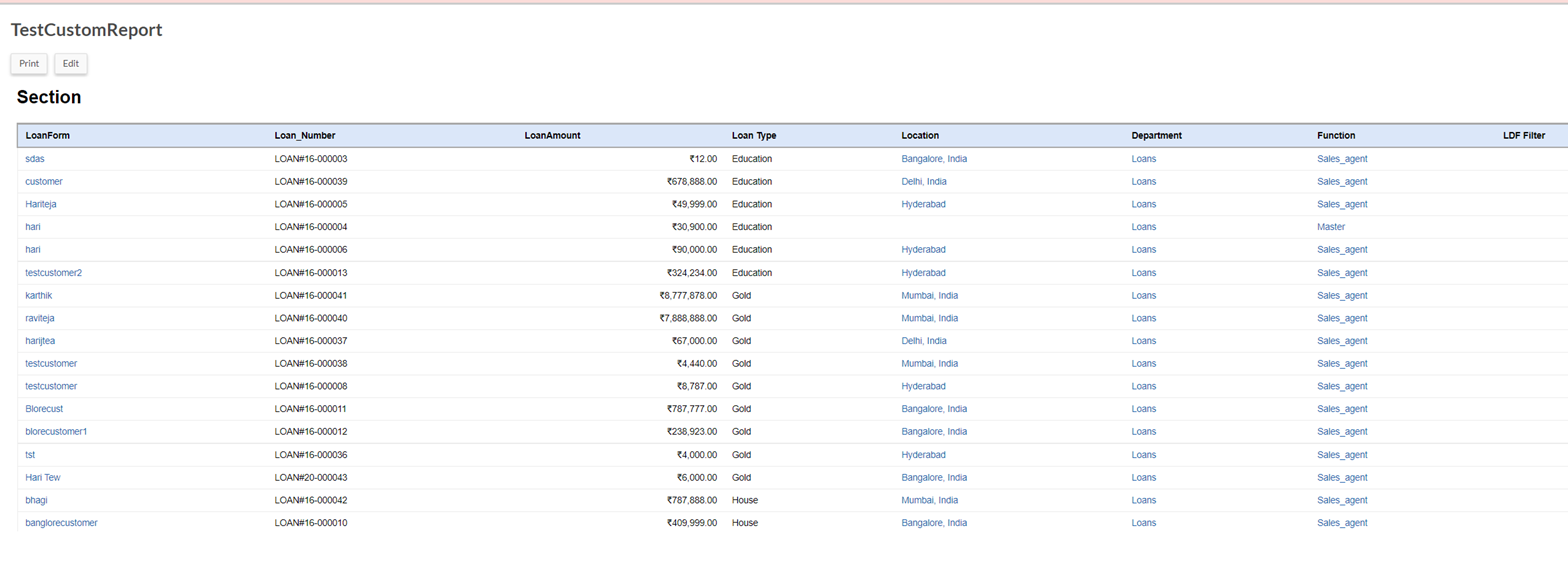Assigning LDF values to records
LDF permissions are set on individual records. This is in contrast to user, role, and relationship-based permissions, which are set on objects and components such as views.
When you add the Organization attribute to an object, the Location, Department, and Function fields are added to its view, edit, and new pages. When you create or edit a record, you can select values for these fields.

When you view a record, the values for these fields are displayed and, in addition, the LDF Filter field displays the rules for accessing the record. The LDF Filter field is useful for verifying the assigned permissions for an object record:
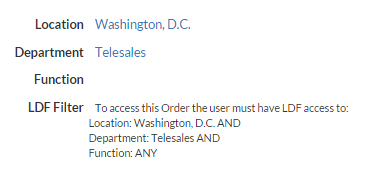
Assigning LDF values for all records can be a tedious task. To simplify it, you can use the following techniques to assign default LDF values to new records:
- The User object always has the Organization
attribute (unless it has been disabled by an administrator), so you can assign
LDF values directly to users. This does not grant any LDF permissions, as
permissions are always granted through groups. Instead, these values can be used
as the default when a particular user creates LDF records. To use default LDF
values assigned to the current user, check the option on the Edit
Field page for that object. For example, in the graphic below,
the Location field for the Order
object has this option checked. When a user creates an order record and does not
provide a location, the user's location is used as the default.
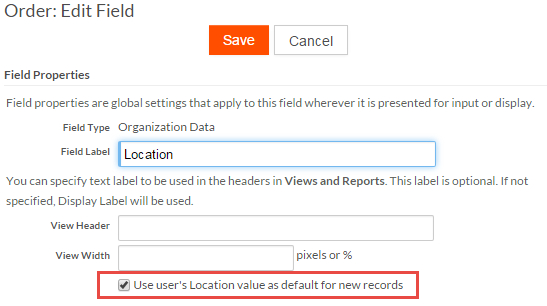
- If you create a new related record, and LDF fields are absent from the new
record page, the LDF values from the parent record are used by default. You must
create the new related record from the parent record's view page; for example,
in the screen below, you would click New Order
Line to create a related order line with the order's LDF
values:
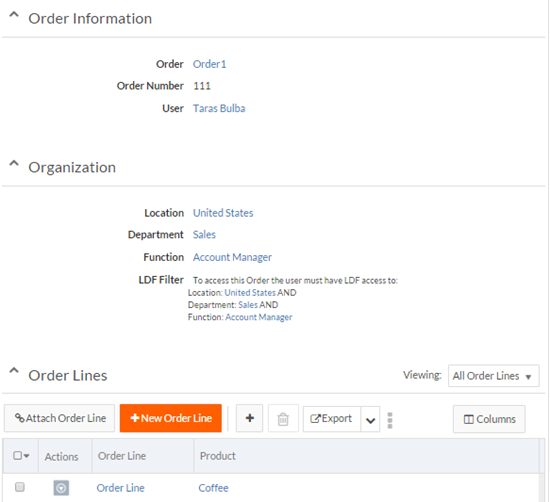
Exporting LDF records
The following scenario gives a visibility on records assigned with LDF values. For an ADMIN, if on exporting a report, all the records within the object is listed in the report.
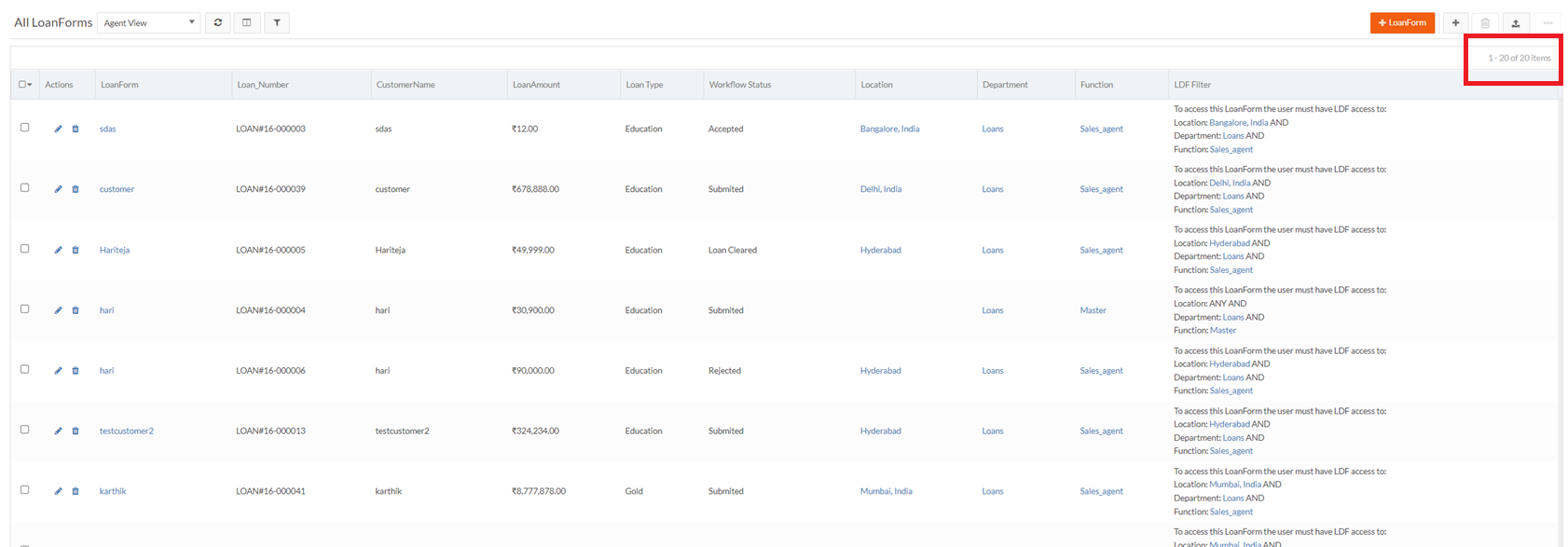
In the same case if any USER exports a report for the objects with LDF enabled, the records within the object is listed in the report based on their LDF groups.

The following illustrates the differences in the charts between an ADMIN and a USER with LDF enabled respectively.
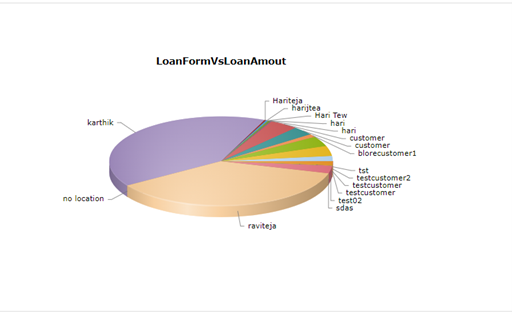
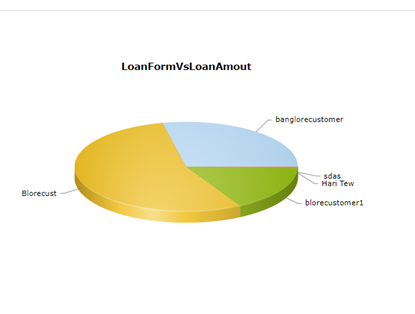
Similarly, the following illustrates the differences in the guages between an ADMIN and a USER with LDF enabled respectively.
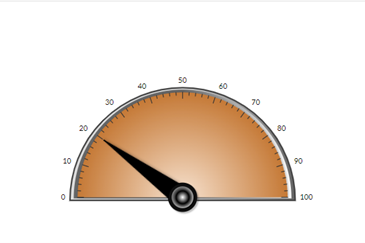
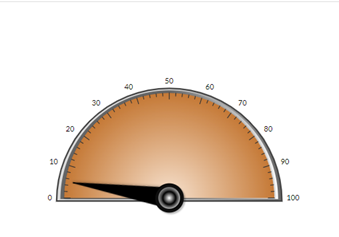
Similarly, the following display the differences in the Custom Reports between an ADMIN and a USER with LDF enabled respectively.
